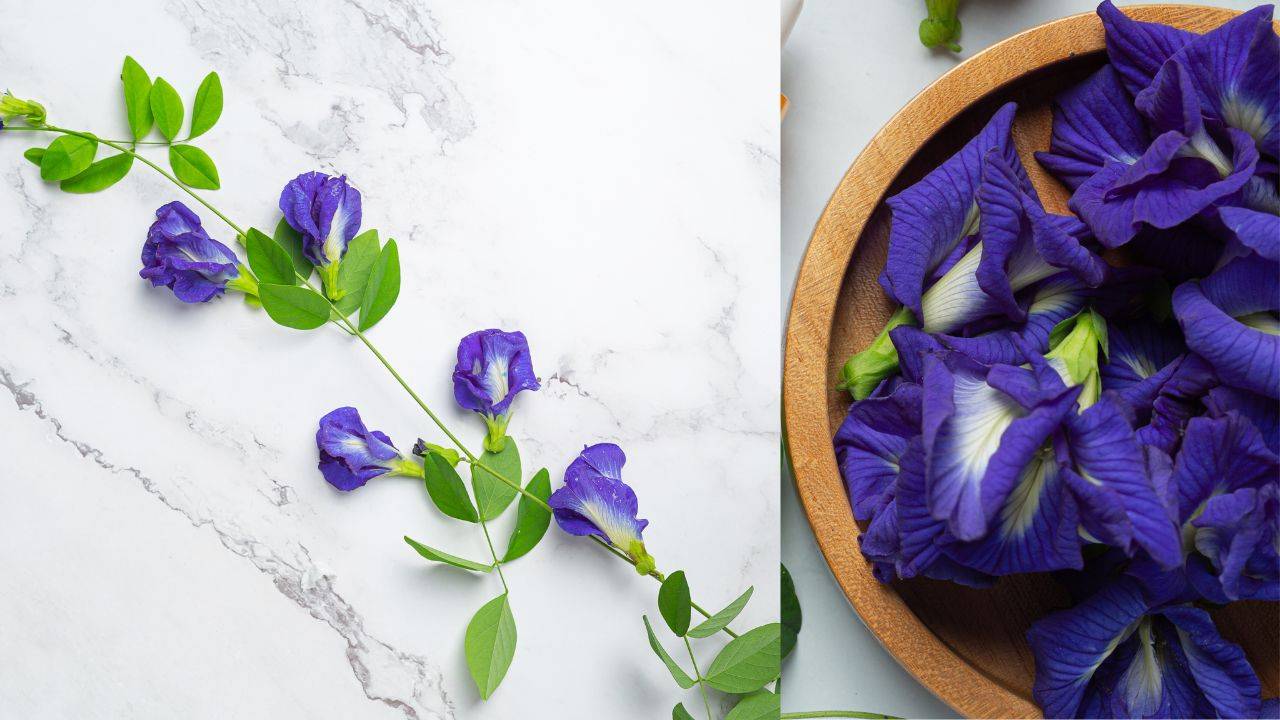
Shankhpushpi is a plant that grows naturally in India, particularly in regions like the Western Ghats, Eastern Ghats, Himalayas, and parts of North and South India.
It is known for its small, bright blue flowers with a yellow center and light green, oblong-shaped leaves that grow alternately on its stems. Shankhpushpi is a low-spreading plant, usually reaching a height of 6-12 inches (15-30 cm).
This plant is packed with beneficial nutrients like alkaloids, flavonoids, saponins, and tannins. These substances give Shankhpushpi its antioxidant properties, which help safeguard the body against damage caused by harmful molecules called free radicals.
How to Grow Shankhpushpi Plant?
Seeds:
-
Begin by gathering mature seeds from a healthy plant or a trusted source.
-
Plant the seeds in well-draining soil and gently press them into the soil.
-
Ensure that the soil remains consistently damp.
-
Typically, you can expect germination to take place within a few weeks.
Stem Cuttings:
-
Start by obtaining stem cuttings that are 4-6 inches long from a robust, healthy plant.
-
Trim away the lower leaves and place the cuttings into well-draining soil.
-
Maintain a consistently moist soil environment while exposing the cuttings to indirect light.
-
You can anticipate the development of roots in a matter of a few weeks.
Division:
-
Begin by uprooting a mature plant and then divide it into smaller segments.
-
Proceed to plant these divisions either in separate pots or in your garden.
-
Ensure thorough watering and provide the necessary care for their growth.
Shankhpushpi Plant: Requirements to Grow
Sunlight
Shankhpushpi flourishes when exposed to full sun to partial shade. To promote its best growth and flowering, make sure it receives a minimum of 4-6 hours of direct sunlight daily. Nonetheless, Shankhpushpi can also endure some shade, particularly during the hottest part of the day.
Soil
Shankhpushpi thrives in soil that is both well-draining and enriched with organic matter. A blend of loam, sand, and compost is a suitable choice. It's important to maintain soil moisture without allowing it to become overly saturated. Aim for a slightly acidic to neutral pH range of approximately 6.0 to 7.0 to support optimal growth.
Water
Maintain a steady level of soil moisture without excessive saturation. Water the plant thoroughly once the top inch of soil appears dry. In periods of high heat and dryness, increase your watering frequency to prevent the soil from completely drying out. Be cautious not to overwater, as this can result in root rot.
Temperature
Shankhpushpi thrives in warm temperatures that typically range between 22°C and 32°C. While it can endure higher temperatures, it might benefit from extra protection during exceptionally intense heatwaves.
Fertilizer
To nourish the plant, apply a well-balanced, water-soluble fertilizer monthly during its active growth period. Opt for a fertilizer with equal nitrogen, phosphorus, and potassium proportions, indicated by an N-P-K ratio of 10-10-10. Follow the recommended rates of application provided on the product packaging. Be cautious not to over-fertilize, as this may result in excessive foliage growth at the expense of fewer flowers.
Pruning
Regular pruning is beneficial for preserving the plant's desired shape and stimulating fuller growth. Trim away any excessively long or untidy stems to foster a denser and more compact appearance. After the flowering period, prune to eliminate faded blooms and stimulate the development of new flowers. Furthermore, as necessary, trim away any dead or damaged branches.
Pests and Diseases
Shankhpushpi is usually resistant to pests and diseases, but aphids, spider mites, and powdery mildew can sometimes be a concern. Keep a close eye on the plant, and if problems occur, use organic insecticides or fungicides as directed on the product label.
Shankhpushpi Plant: Uses
Shankhpushpi is highly esteemed in traditional medicine for its cognitive-enhancing and memory-improving properties. It is known to have a calming effect on the nervous system, aiding in stress, anxiety, and sleep disorder management.
Beyond cognitive benefits, Shankhpushpi has traditional uses for treating ailments such as headaches, fever, constipation, inflammation, and liver disorders.
















